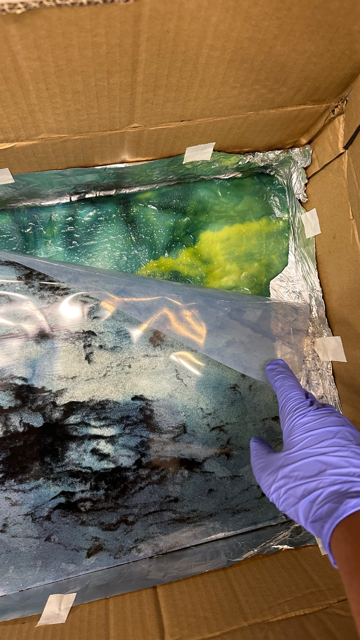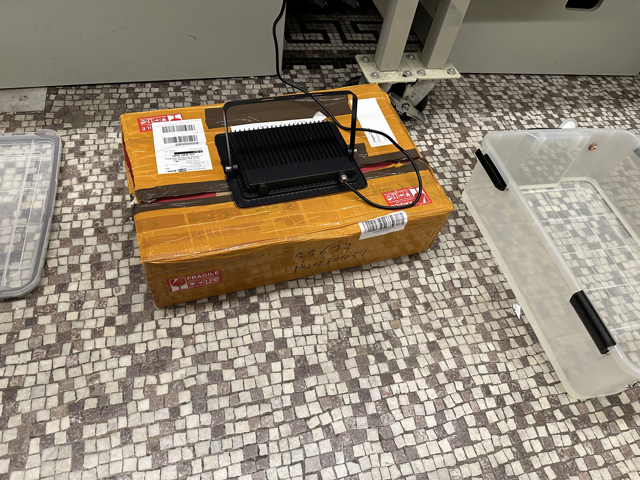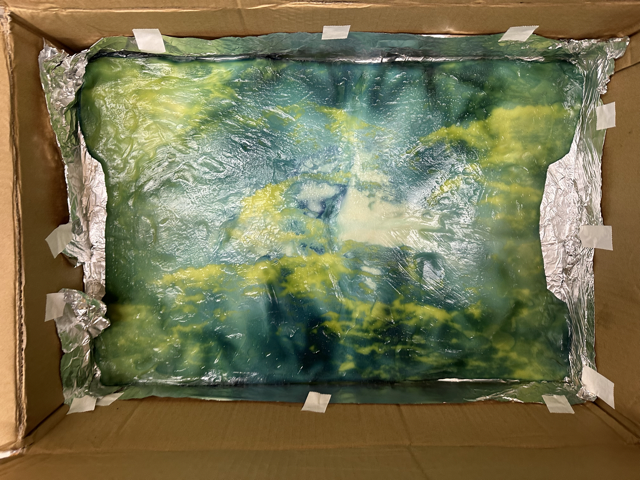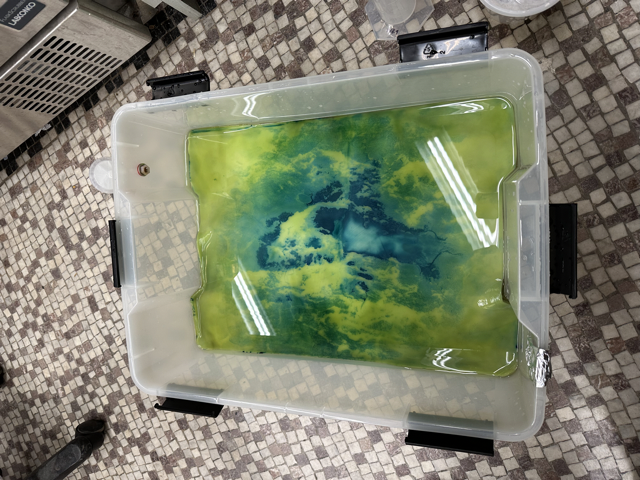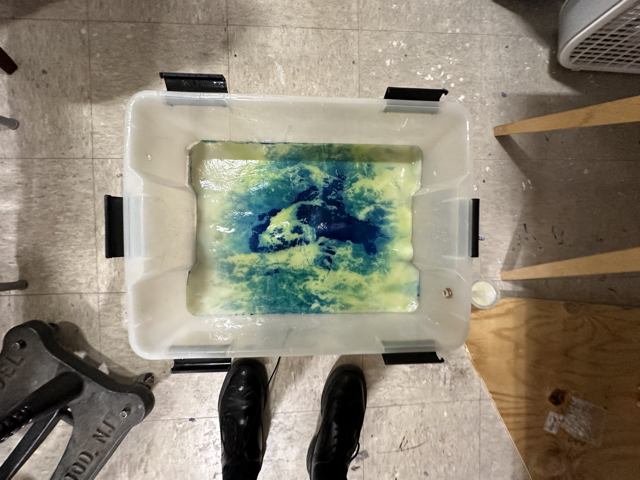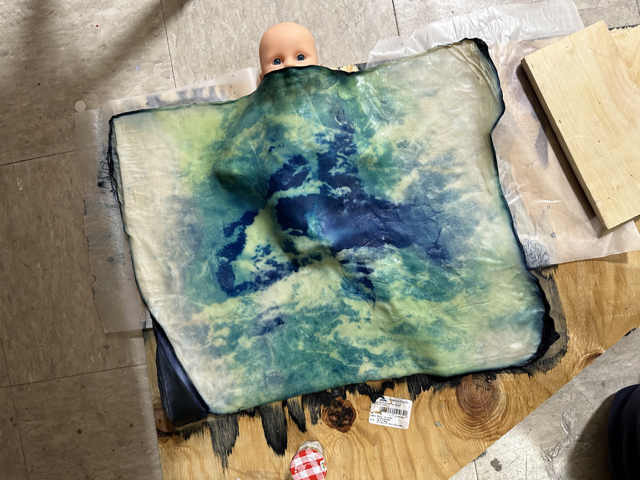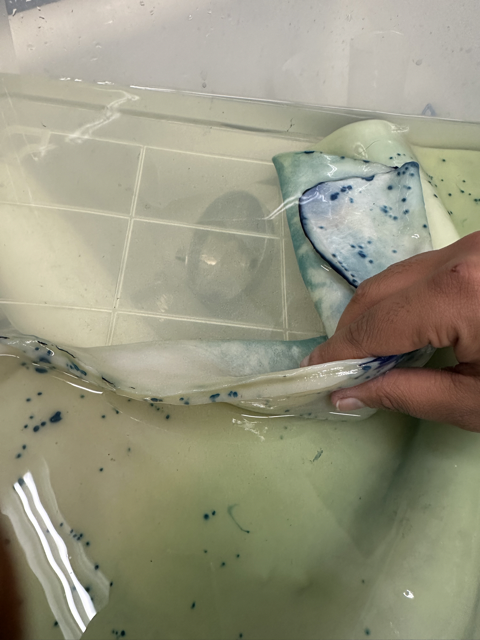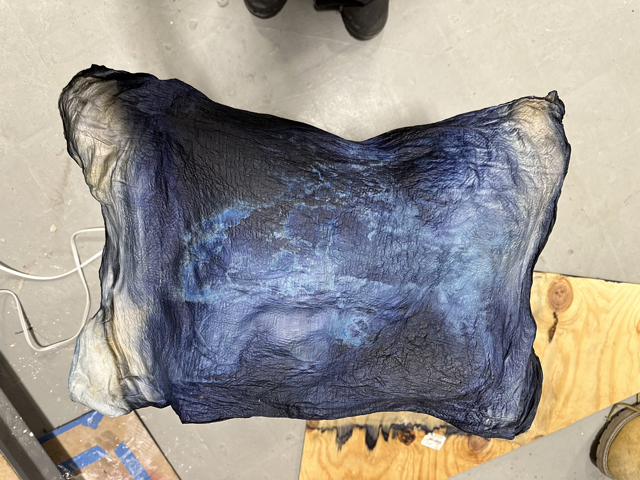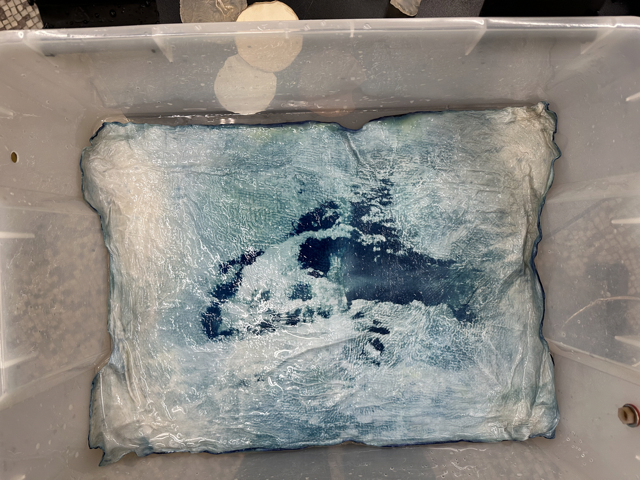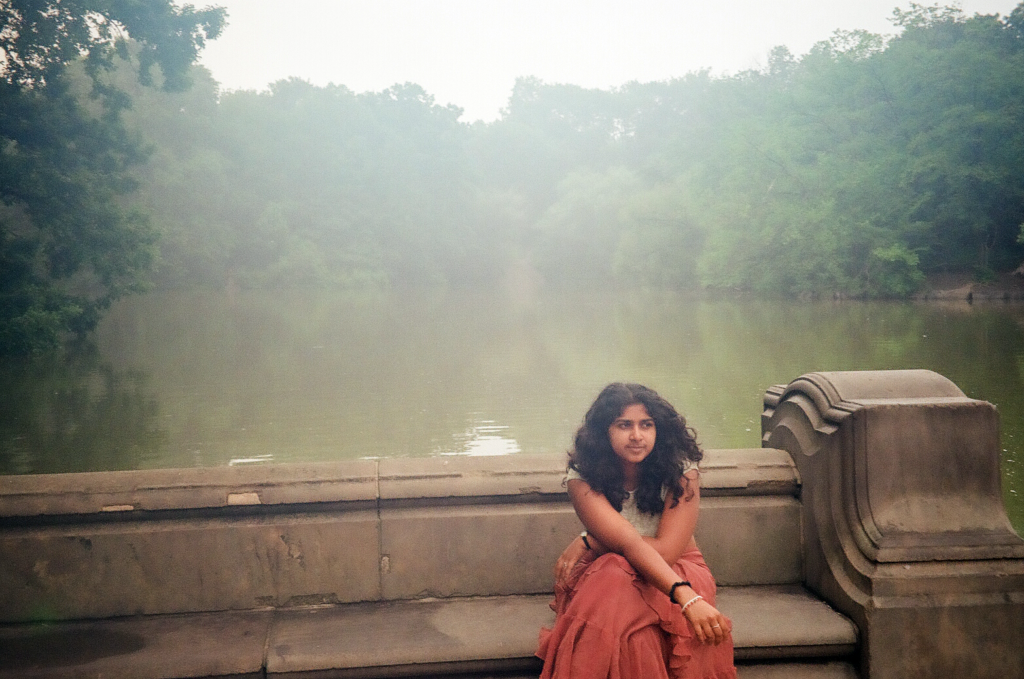
NADIA NAZAR, ANIMATION, INTERDISCIPLINARY SCULPTURE, AND MAT, 2024
Nadia is an animator and sculptor with an artistic practice primarily using steel and stop-motion as methods of storytelling. Her work disrupts and engages in traditional processes, specifically related to her relationships with her family and intersections with the land.
Project Overview
The piece consists of bacterial cellulose, grown from G.hansenii cells, with an image in cyanotype and formed onto a baby doll. It’s a memorial, both thinking about the children and babies in Gaza and also the children who have been impacted by floodwater
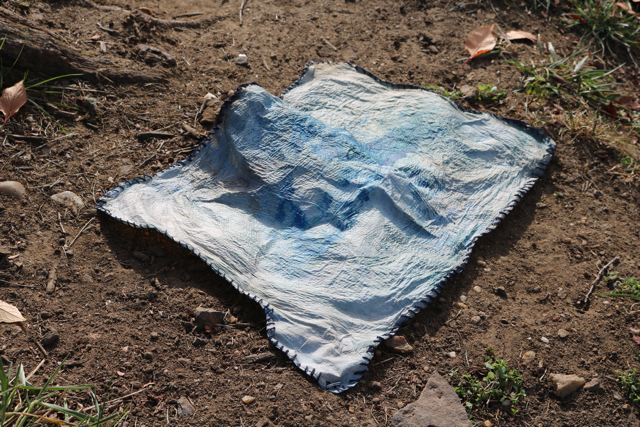
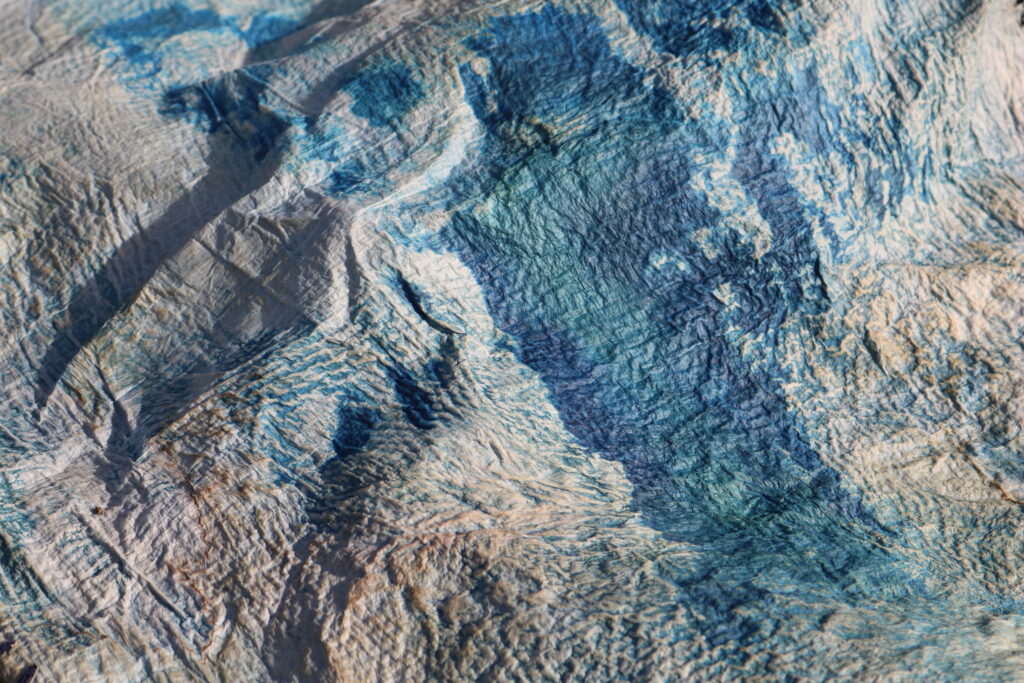
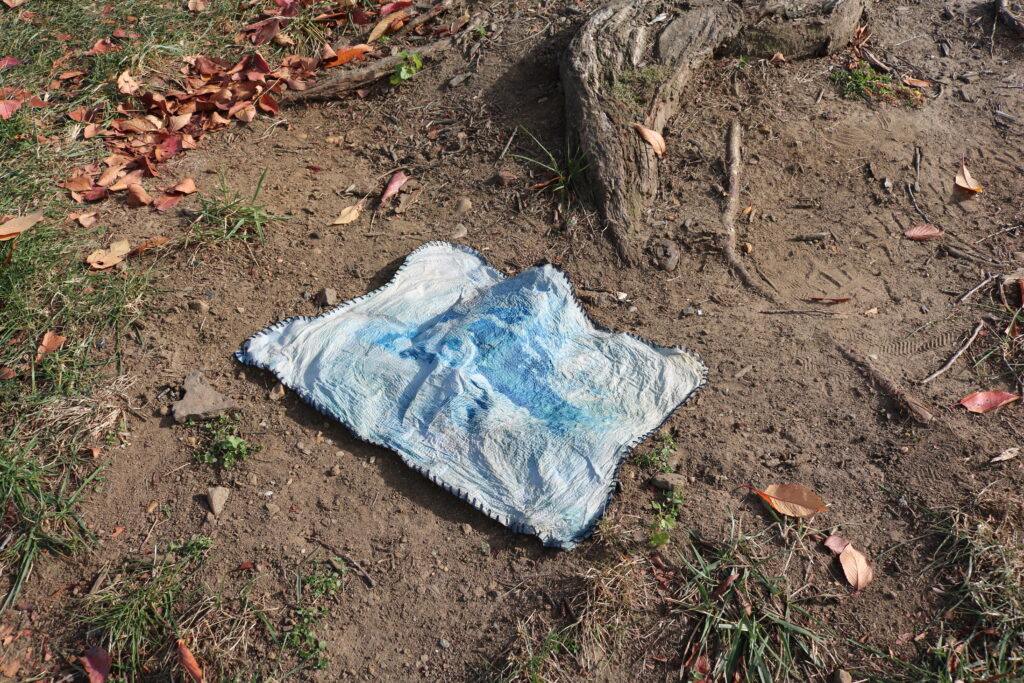
Process
I did different tests on small round pellicles before moving to my large one that’s about 16” x 21” large. I first dried a pellicle out and painted cyanotype chemistry on it in a dark room with a red light(my laundry room). The chemistry began developing within about 20-30 minutes. It absorbed the chemistry very immediately. I tried to expose it to an image with a UV light and negative, but it didn’t hold the image. It also wasn’t in a closed area for a concentrated amount of UV light though. A day later the pellicle was fully dry and a dark, but slightly transparent, indigo.


I did another test in which I soaked a pellicle in chemistry for about five minutes. [Note: Ryan said I should’ve let it soak for some more time, letting the chemistry soak all the way through] The chemistry concentration I used was 200% so it would dilute with the water already present in the pellicle. I tried exposing it with a negative and UV light from the sun, but it wasn’t strong enough. It slowly turned a medium blue over the course of the next few days. The side that wasn’t exposed was still pretty yellow from the chemistry and also not being exposed/oxidizing. I left the backside out in the sun for 20-30 minutes and it turned a nice medium blue. I then exposed the main side in a box with a strong uv light for 15 – 20 minutes with a negative of a photo of tree branches. The image appeared, even more so after giving it a rinse. I soaked it in water overnight and it became a stronger blue, with less yellow tones from the chemistry, by the next day when I checked on it.
I had different ideas for the order of which I would conduct the process for the large pellicle based off of what I knew about the materials, the test results, and time. I struggled with thinking of whether to cyanotype the pellicle first and then form it to the shape I wanted (a babydoll) or vice versa. I started drying and forming it, thinking I would cyanotype it after by lasercutting a stencil and spraying the chemistry on. At this point in the process I thought that the chemistry would start developing instantly without UV light exposure due to my first test. I didn’t consider though that the pellicle used in that test could have had leftover residue from the caustic that we let it soak in to kill the bacteria. Considering this, I soaked the large pellicle in warm water a few more times before starting the cyanotype process instead of waiting for it to finish forming first. I used the 200% concentration of chemistry and folded the pellicle into a gallon ziplock bag with the chemistry. I then let it sit in the Bransonic for 45 minutes to let the pellicle absorb the chemistry. Ryan mentioned that since I had already started to dry the pellicle, it would have a harder time absorbing the liquid. I then put it in a box and exposed it with the strong UV light and a large negative of a photo of moving water. It was exposed for about 22 minutes. I gave it many many warm baths until the yellow chemistry color faded away. The middle section turned a deep blue in some parts, while the outer rim didn’t have as much exposure from the UV light, because the box it was in wasn’t very tall.
When it began drying afterword, on the object, it started turning a very very dark blue. I was concerned that this would take the whole image away. I was concerned that I left too much chemistry sit in the pellicle still, waiting to develop. I decided to give it a bath and found out that the dark blue washed away. I then let the whole pellicle dry and turn that dark blue. I washed it, and let it dry one last time. This was all done on the object I was forming onto. It was a nice light to medium blue by the time it was done. I think it’s also important to note that I installed it outside for critique, and noticed that it had faded and browned a little in the sun.
Overall, working with the cellulose was an invigorating process of tending and caring to this material over the course of a few weeks.
Learn More
The image of moving water, taken from the Great Falls in Potomac, MD in October 2021.
